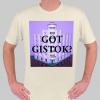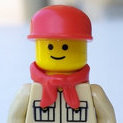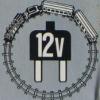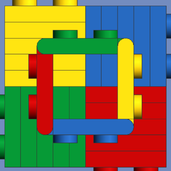-
Content Count
1358 -
Joined
-
Last visited
About LEGO Historian

-
Rank
Older than ABS
Spam Prevention
-
What is favorite LEGO theme? (we need this info to prevent spam)
Town
Profile Information
-
Gender
Male
-
Location
USA
-
Interests
LEGO, History, Architecture
Extra
-
Country
USA
-
Special Tags 1
https://www.eurobricks.com/forum/uploads//gallery/album_241/gallery_8966_241_2675.png
-
Haven't been around in a long time... still expanding and now rewriting my (soon to be 4000 page) digital LEGO guide... But in the LEGO color discussion... TLG didn't make gray and green bricks for several reasons. One was they were weirdly stingy about producing a lot of different LEGO colors in bricks for decades. When the tube bottom bricks were introduced in 1958, LEGO bricks/plates were only found in red, white, blue, yellow, clear (and starting in 1961 (EU), and 1963 (UK/AUS, USA/Canada)) black bricks. Also gray plates were introduced starting in EU in late 1962, in USA/Canada in 1963, and UK/Australia in 1964. Green plates were introduced in USA/Canada in 1963, and elsewhere much later. The first gray bricks were found in the 1974 introduced 1650 Maersk Line Container Ship, and in regular sets (in about a dozen sizes) in the 722 Universal Building Set in 1980, as well as a few in (starting in 1979) Space sets. When the 375/383 first Castle sets of 1978 were introduced, they were not intended to be the beginning of a LEGO System... just a pair of sets in the parts colors that were available. Had these sets been introduced 2 years late (1980), they likely would have been gray. When the actual LEGO Castle System was introduced in 1984... gray became the color of choice. So if TLG was worried about gray being used for war toys by children, that worry was pretty much over by 1980 (of course after the yellow castle introduction). The reason for using yellow to represent minifigure heads had its' origins in the mid 1960s, when yellow was the best color suited for LEGO built figures, such as those in the 905 Doll Set (USA/Canada only), and the 321 Clown Set (Denmark, Norway and Japan only)... https://www.bricklink.com/v2/catalog/catalogitem.page?S=905-1#T=S&O={"iconly":0} https://www.bricklink.com/v2/catalog/catalogitem.page?S=321-1#T=S&O={"iconly":0} Also, this is unknown to most LEGO collectors, but the introduction of black bricks in the 1960s, made for some "alternate builds" of many of the 316-324 sets of the mid 1960s, as African figures... TLG was very stingy in creating new colors for some very odd reason. They made dark gray, tan, and Maersk blue bricks for the model shops, but not for general sets until much later. In 1985 I saw a model at a Detroit KMART of a very large model of Brussels Gothic City Hall (Hotel de Ville) using ONLY tan and old dark gray colors. I became angry at the time, because they were being dishonest to kids of that era, of what could be built with LEGO colors that was actually available to the public. And it wasn't until the 1990s that other color bricks started being produced for sets. And since 2000 we started having an absurdly large number of LEGO colors. It's almost as though TLG was atoning for their lack of colors stinginess of the 1960s-1990s.
-
Vladut started following LEGO Historian
-
Pastajensen started following LEGO Historian
-
Of Course Elsa started following LEGO Historian
-
Wow... 9 year old thread... but still worth reopening... When TLG introduced the new 2x2 (reinforced underside) macaroni brick in 2008.... https://www.bricklink.com/v2/catalog/catalogitem.page?P=85080#T=C It rendered the old hollow bottom (1955-2014) obsolete... https://www.bricklink.com/v2/catalog/catalogitem.page?P=3063#T=C So the new macaroni bricks can no longer be used to create this type of staggered macaroni brick build... https://brickset.com/sets/801-3/Space-Rocket I assume that the old staggered macaroni built builds were considered illegal in today's definitions... but I remember that old build type was also used in older versions of the Jefferson Memorial columns in Legoland Billund...
-

Counterfeit minifigs (allegedly) on Bricklink?
LEGO Historian replied to 1980-Something-Space-Guy's topic in General LEGO Discussion
Yes, since minifigures have become the "crown jewel" of many LEGO collectors (not all), there are a preponderance of fake minifigure parts, or real minifigure parts with fake aftermarket printing. Just look at the Mr. Gold CMF of 2013... there were 5000 genuine figs produced, but because they sell for thousands, the number of fake Mr. Gold's outnumber real ones by 20 to 1 (at least). Fake ones sell on Ebay, but are listed as fakes, mostly for $2 to $5 each. Many of these (Chinese sourced) fakes even have a LEGO logo, but are fake elements. What makes it bad is that fake Mr. Gold looks often nicer than the real Mr. Gold. So with this item, one would be foolish to purchase one without the certificate identifying it as "xxxx of 5000". Fake LEGO items have been around for at least 15 years, when someone made fake Maersk blue construction helmets (also sourced from China), which were only found in the 1980 era 1651 Maersk Line Container Truck, and which sold for hundreds of dollars. These fake Maersk helmets, weren't even the right shade of blue... they were more of a teal blue than a Maersk blue. The reason for making this fake helmet dried up in 2011, when the 10129 Maersk Container Train was introduced (with 3 minifigs with Maerskn helmets), when they started selling for as little as $2. The new helmets have LEGO on the inside, the real old 1980 helmets only have a mold number on the inside (only 1 for sale on BL for $75). In my Unofficial LEGO Sets/Parts Collectors Guide, I have a chapter for Counterfeit LEGO parts/sets. However besides about 1/2 dozen minifigs (including Mr. Gold, and the Maersk helmet) the potential fake minifigs out in the wild are too numerous to mention, and I stick mainly with fake set boxes, 10179 Millennium Falcon fake radar dishes, and a lot of other rare LEGO parts that have been faked. For those of you who have my digital collectors guide, new (free to current owners) updates will be out at the end of the year. -

Help identifying/evaluating 50s/60s LEGO. Marbled baseplate and bakery sign not on Bricklink
LEGO Historian replied to Leviani's topic in General LEGO Discussion
I believe Leviani got all the answers he needed from Brickset, Facebook, and Flickr. That baseplate was produced by Swedish plastics maker GEAS KONSTHARTS of Gislaved Sweden. They produced a Swedish licensed version of Automatic Binding Bricks from 1950-53, and a separate product called PRIMA from 1953-55. Starting in March 1955 LEGO sales began via offices in Lerum Sweden, with the first LEGO sets produced from parts produced at a Norwegian LEGO subsidiary (a co-owned company called A/S Norske LEGIO, that TLG owned along side Oslo plastics maker Svein Strømberg & Co.). It gets very complicated... As for the BAGERI Swedish baker sign... there are many LEGO brick signs from the 1955-75 era that are not listed in Bricklink. Here is a copy of my Unofficial LEGO Set/Parts Collectors Guide, Chapter 48 - Printed and Painted LEGO... showing many more LEGO signs that are not in Bricklink... https://www.1000steine.de/brickset/miscellaneous/Lego Chapter 48 Vol2.pdf -

Advice on emulating an old church
LEGO Historian replied to Alexandrina's topic in General LEGO Discussion
First of all... pre-Norman church would translate to "Saxon church" to me. English Saxon church architecture does not generally have rounded apses, as your image shows. That looks like a later Norman addition to an earlier church. Here is a LEGO ideas book page of a Saxon church, showing all squared sides.... If your intent is to keep it pure Saxon, then eliminate rounded surfaces, which would be later Norman or medieval additions. -
The 070 Basic set was produced from 1967 until 1972. However, there is no known online parts inventory... at least not in Bricklink nor Peeron.
-

Trans Clear LEGO Thru the years...
LEGO Historian replied to LEGO Historian's topic in General LEGO Discussion
Funny that this discussion about trans-clear bricks from 7 years ago got re-opened. Recently on Brickset, I started a discussion on the latest plastic now used for trans-clear LEGO elements... called MABS... Methyl methacrylate-acrylonitrile-butadiene-styrene. Here is the discussion: https://forum.brickset.com/discussion/33843/are-trans-clear-lego-or-all-trans-parts-now-made-out-of-a-different-plastic -

Is LEGO using the 18+ rating wrong?
LEGO Historian replied to Lego David's topic in General LEGO Discussion
Well stated Thorsten... Did some of you miss the announcement that LEGO was going to start labeling all sets geared for adults with the "18+" label, so that retailers can follow directions to put all of these sets together into one section just for adult collectors? https://www.brothers-brick.com/2020/06/07/legos-new-adult-product-strategy-why-lego-is-retiring-creator-expert-feature/ Not all adult LEGO builders are active AFOLs... so this will help them out as well as AFOLs. -

Question about vintage photo
LEGO Historian replied to Mummeldjur's topic in General LEGO Discussion
Just out of curiosity... is there a link to that slideshow on the LEGO company? Thanks!! -

Question about vintage photo
LEGO Historian replied to Mummeldjur's topic in General LEGO Discussion
The LEGO Group has been "modifying" photographic images to make colorful LEGO images all the way back to 1953. Here is an early 1953 LEGO photograph showing Godtfred Kirk Christiansen's 3 children... Kjeld, Gunhild, and young Hanne. This 1953 image was colorized and cropped for the basic set box tops of 1953-55 (of Denmark, Norway and Sweden).... TLG has been doing this type of artwork changes during the early years of LEGO. For those of you who have my Unofficial LEGO Sets/Parts Collectors Guide... (computer desktop download), there is an entire chapter devoted to modified artwork. (Note: for those of you waiting for your free upgrade to 2020, I will have it ready in 1st quarter 2021... with over 500 higher resolution older images, as well as thousands of images to cover the years 2000-2020.) -

Lego Displays at ToysRUs and other stores
LEGO Historian replied to DrJB's topic in General LEGO Discussion
LEGO retailer display models have always been glued, since the first ones shown at LEGO toy retailers in 1955. WITHOUT EXCEPTION they have always been glued. There are even yearly glued display model catalogs. In my Unofficial LEGO Sets/Parts Collectors Guide, there is an entire huge chapter devoted to older glued retailer models. Here are some older examples... from the 1960s and 1970s, but my guide chapter has even modern models. These are mainly from 2 of my LEGO friends who buy and restore old glued retailer models... Henk (Netherlands) and Chris (UK)... 1959-60 Castle glued model... Very large glued model of Schloss Johanisburg in Aschaffenburg Germany (summer home of the Archbishops of Mainz)... Model of an existing half timbered house in Hildesheim Germany... A 1960s glued model of an office tower... A 1963 model of a Swiss chalet, showing the new (to 1963) small plates... A 1959 cruise ship model... An 1960 model of the Elizabeth Tower (Big Ben) in London... A 1976 historic photo of LEGO owner Godtfred Kirk Chrisitiansen showing Prince Claus of Netherlands a model of the Queen and Princes summer palace in the Netherlands... A late 1960s model of a LEGO medieval house using LEGO fence pieces as windows... A 1959 photo of glued "LEGO Gnomes" marching out of the LEGO factory in Billund... A mid 1970s group of Homemaker glued display models... A 1980s glued display model of an English manor house... A 1960s group of English half timbered glued display models... A circa 1970 glued display model of a fantasy castle... A 1960s glued display model of an aircraft carrier and a large cruise ship... A 1980s glued display streetscape of an English street, with a snack bar in frront... Besides these and many dozens more glued display models over the last 60 years, my computer desktop Unofficial LEGO Sets/Parts Collectors Guide chapter on glued retailer models also has images of glued retailer catalogs, retailer order forms, and other related items. -

Whats the best way to assess the value of a lego collection for insurance purposes?
LEGO Historian replied to Carefree_Dude's topic in General LEGO Discussion
If you have more modern sets, then Bricklink is the way to go... However, for sets before 1980 that becomes problematic, since many older sets have "N/A" in the Bricklink price history field, thus making it useless for determining the value of older sets. In my Unofficial LEGO Sets/Parts Collectors Guide I have a 400 page "Insurance Pricelist" that covers all sets from 1949-80. This will help out for filling in the blanks for older LEGO sets. My guide has price info that any normal "collectible" guide would have... for 4 conditions: VG EX MIB MISB. The VG value would be for a set without the box. My collectors guide Insurance Pricelist has a 400 page document in US dollars and also a separate one in EUROs. -

Who plays batman in the Lego Movie?
LEGO Historian replied to KelliWRhodes's topic in LEGO Media and Gaming
Robert Pattinson, who became a Hollywood star when he starred as the love starved vampire Edward Cullen in the 5 movie Twilight Saga back in 2008-2012... will be the new Batman in the upcoming THE BATMAN movie due out in October 2021 (supposedly a trilogy of 3 movies is planned). He played a great brooding vampire in Twilight (and the other 4 movies, which grossed as much as all the Jurassic Park movies). It will be interesting to see his minifigure when the next LEGO Batman movie comes out... https://www.google.com/search?q=Robert+pattinson&rlz=1C1CHBF_enUS898US898&sxsrf=ALeKk001ZyU9qIX-PXjgkVJNiKx2zIRdfQ:1599159691585&source=lnms&tbm=isch&sa=X&ved=2ahUKEwiViOyK1s3rAhXWLs0KHZMDBrsQ_AUoAnoECBwQBA&biw=1280&bih=591 -

LEGO Club PDFs and Digimags
LEGO Historian replied to Darth Fandom's topic in General LEGO Discussion
Sorry I can't be of any help... LEGO Club magazines is outside of my range of study. Of my nearly 35,000 LEGO images (I just had to move them all to a new computer, so I was shocked I had that many)... fewer than 50 are LEGO magazine related, and most of those are for the late 50s and early 60s. I also have the cover pages for comics that are related to sets, but nothing related to the LEGO Club magazines. -

Is it time for LEGO to stop being colorblind?
LEGO Historian replied to BrickG's topic in General LEGO Discussion
This whole thread is kind of pointless.... Throughout LEGO history until the minfigs came out in 1978... other ethnic groups, such as Africans in native garb, or Middle Easterner Muslims in Birqa's and others were represented in LEGO builds, such as these alternative builds in 1960s model sets 316, 324, 321, and 317.
















